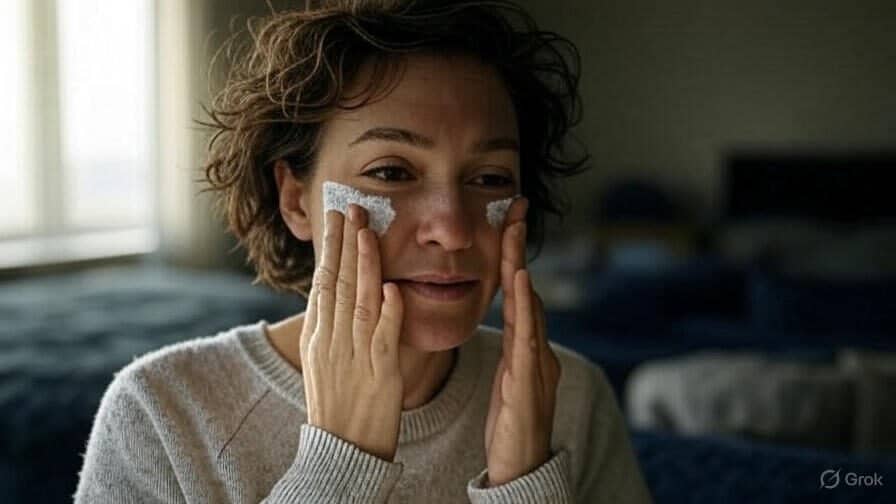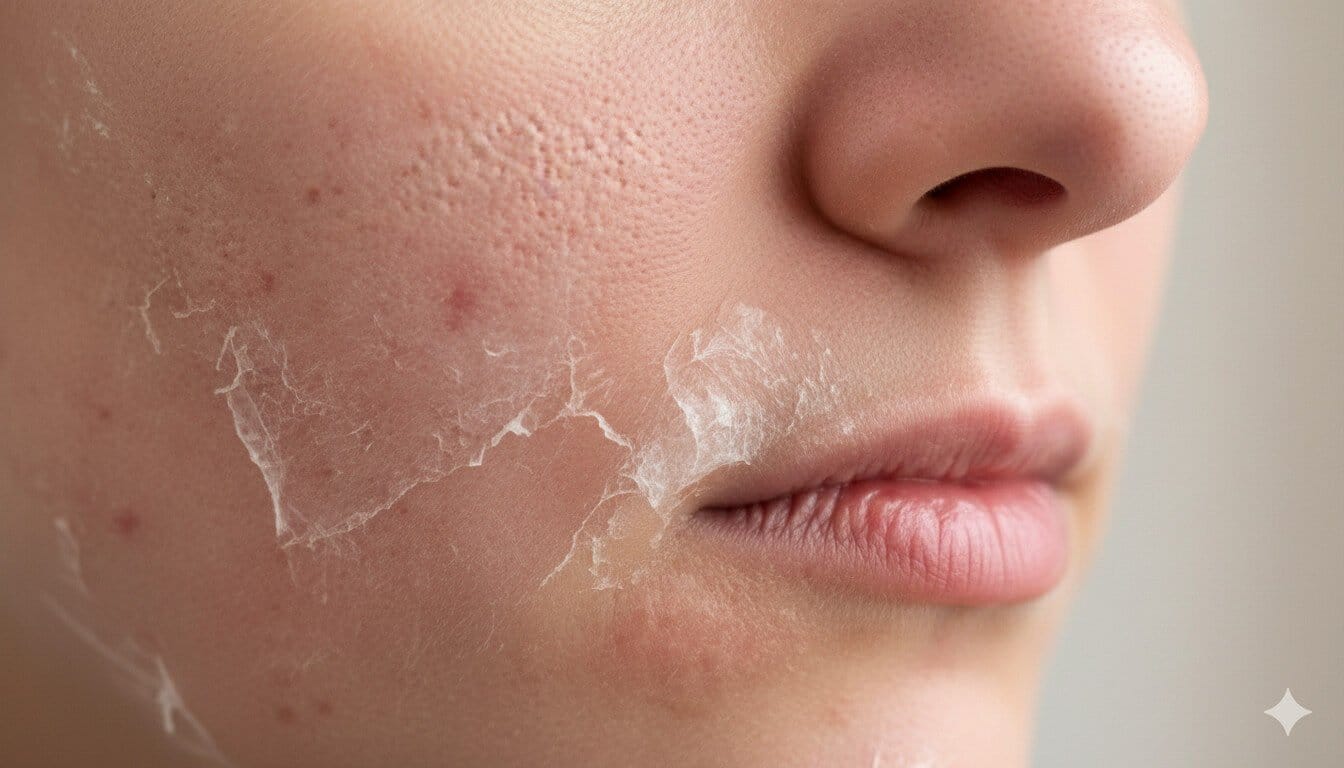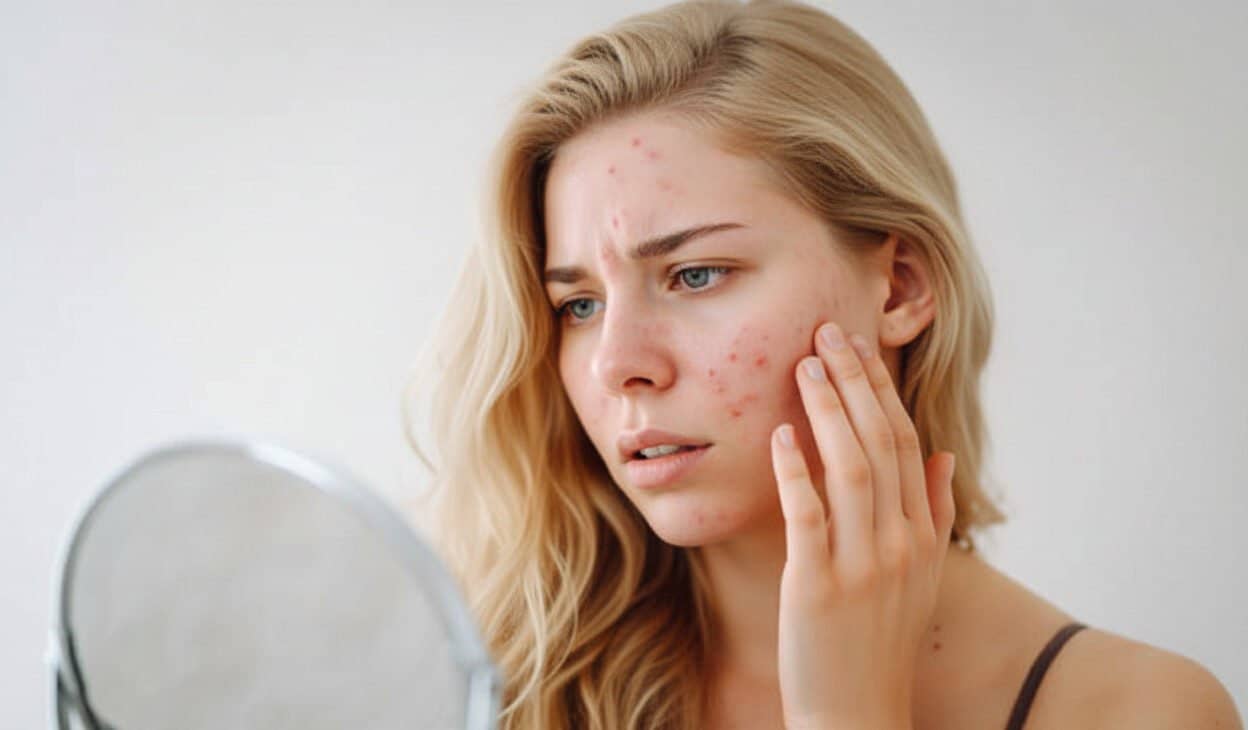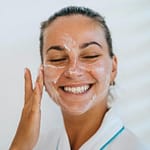How to deal with Eczema Rash

- Tricks to Treat Eczema
- Trick 1: Apply Aloe Vera Gel
- Trick 2: Take an Oatmeal Bath
- Trick 3: Use Coconut Oil
- Trick 4: Try a Chamomile Tea Compress
- Trick 5: Use a Cold Compress
- Trick 6: Moisturize Frequently
- Trick 7: Use Fragrance-Free Products
- Trick 8: Wear Breathable Clothing
- Trick 9: Manage Stress Levels
- Trick 10: Keep a Trigger Journal
- Importance
- How to Solve this issue?
- Skincare Tips
- Brand Products to Use
- FAQs
Eczema, also known as atopic dermatitis, is a chronic skin condition causing red, itchy, and inflamed patches that can make daily life uncomfortable. These flare-ups often appear on the face, hands, elbows, or knees, triggered by irritants, allergens, stress, or dry skin. The constant itching and visible rashes can lower confidence, but you don’t need costly treatments to find relief. This guide shares 10 effective at-home tricks to treat eczema, using natural and accessible methods suitable for sensitive, dry, or combination skin. These beginner-friendly solutions help soothe irritation and prevent flare-ups. For example, many use household items for quick relief. We’ll also recommend trusted products and answer common questions to help you manage eczema safely at home. Let’s explore these tricks to calm your skin and restore comfort!
Tricks to Treat Eczema
Trick 1: Apply Aloe Vera Gel
Aloe vera’s anti-inflammatory and hydrating properties soothe eczema’s itch and redness. It’s gentle for sensitive skin but requires a patch test for allergies. Apply fresh aloe vera gel from a plant or 100% pure store-bought gel to affected areas. Spread a thin layer, leave for 15 to 20 minutes, and rinse with lukewarm water. Use 1 to 2 times daily for 3 to 5 days. For instance, this calms rashes on elbows from dry weather. Test on a small patch to avoid reactions. This trick reduces inflammation and promotes healing, offering a natural alternative to steroid creams.
Trick 2: Take an Oatmeal Bath
Oatmeal’s avenanthramides reduce itching and inflammation, making it ideal for eczema flare-ups. Overuse without moisturizing can dry skin, though. Grind 1 cup of plain, unflavored oatmeal into a powder and add to a lukewarm bath. Soak for 15 to 20 minutes, pat dry gently, and apply a fragrance-free moisturizer. For example, this soothes widespread rashes on the legs. Use once daily for 3 to 4 days. Ensure oatmeal is pure to avoid additives. This gentle trick calms irritation and restores comfort for sensitive skin.
Trick 3: Use Coconut Oil
Virgin coconut oil hydrates and reduces inflammation, helping dry, cracked eczema patches. Its antimicrobial properties prevent infections in scratched areas. After cleansing, apply a thin layer to the rash, massaging for 30 seconds. Use 1 to 2 times daily, ideally after a shower. For instance, this relieves hand rashes from frequent washing. Test on a small patch, as it may clog pores in oily skin. Avoid if allergic to coconut. This nourishing trick keeps skin moisturized, reduces itching, and supports healing naturally.
Trick 4: Try a Chamomile Tea Compress
Chamomile’s calming properties soothe eczema’s itch and redness, especially for allergic flare-ups. Allergies to ragweed may cause reactions, so caution is needed. Brew a strong tea with 2 chamomile tea bags in 1 cup of hot water, cool it, and soak a clean cloth. Apply to the rash for 10 to 15 minutes, rinsing afterward. Use 1 to 2 times daily for 3 to 5 days. For example, this works for facial rashes. Test on a small patch first. This trick reduces inflammation and provides gentle relief.
Trick 5: Use a Cold Compress
A cold compress reduces itching and swelling in eczema flare-ups. Overuse without moisturizing can dry skin, so balance is key. Wrap ice in a clean cloth or use a cold, damp towel and apply to the rash for 10 to 15 minutes, 2 to 3 times daily. For instance, this calms knee rashes from scratching. Avoid direct ice contact to prevent damage, and moisturize afterward. This simple trick offers instant relief and reduces inflammation, ideal for acute flare-ups.
Trick 6: Moisturize Frequently
Dry skin worsens eczema, increasing itching and cracking. Frequent moisturizing with fragrance-free products locks in hydration. Apply a hypoallergenic, non-comedogenic moisturizer 2 to 3 times daily, especially after bathing or remedies. For example, this soothes elbow rashes from cold air. Choose creams with ceramides or hyaluronic acid for sensitive skin. This trick strengthens the skin barrier, reduces flare-ups, and enhances other remedies’ effectiveness, keeping skin soft and less irritated.
Trick 7: Use Fragrance-Free Products
Fragranced soaps or lotions often trigger eczema flare-ups. Switching to fragrance-free, hypoallergenic products prevents irritation. Use a gentle cleanser and moisturizer labeled “for sensitive skin” daily. For instance, this reduces rashes from scented body wash. Apply after remedies to lock in moisture. Check labels for “fragrance-free” to ensure safety. This trick minimizes irritation, supports healing, and prevents future flare-ups, making it essential for eczema-prone skin.
Trick 8: Wear Breathable Clothing
Tight or synthetic fabrics trap sweat and irritants, worsening eczema. Loose, cotton clothing reduces friction and keeps skin cool. Wear cotton shirts, pants, or gloves over affected areas, especially after remedies. For example, this helps hand rashes from dish soap. Wash new clothes to remove dyes. This trick prevents irritation and supports remedy effectiveness, reducing flare-ups and keeping skin comfortable.
Trick 9: Manage Stress Levels
Stress triggers cortisol, worsening eczema’s itch and inflammation. Practicing stress-relief techniques helps calm flare-ups. Try deep breathing, meditation, or yoga for 5 to 10 minutes daily. For instance, inhale for 4 seconds, hold for 4, exhale for 6 to reduce stress. Journaling or short walks also help. This trick lowers cortisol, reduces flare-ups, and supports skin health, making it a vital part of eczema management.
Trick 10: Keep a Trigger Journal
Identifying triggers like soaps, foods, or stress prevents eczema flare-ups. Keep a journal to note when rashes appear and possible causes, such as a new detergent. For example, logging a rash after using a scented lotion pinpoints the trigger. Review weekly to avoid culprits. This proactive trick customizes your skincare and lifestyle, reducing flare-ups and enhancing the impact of other remedies.
Importance
What Is Eczema?
Eczema, or atopic dermatitis, is a chronic condition causing red, itchy, and inflamed skin patches, often on the face, hands, elbows, or knees. It results from a weakened skin barrier, allowing irritants, allergens, or bacteria to trigger flare-ups. Common causes include dry skin, stress, soaps, or allergens like pollen. For example, a rash on hands from frequent washing is typical. While manageable, persistent cases may need medical attention. Understanding triggers is key to effective at-home treatment.
Why These Tricks Work
These tricks address eczema’s core issues: inflammation, dryness, and irritation. Aloe vera, chamomile, and cold compresses soothe itching, while oatmeal and coconut oil hydrate. Fragrance-free products and breathable clothing prevent triggers, and stress management reduces cortisol-driven flare-ups. Journaling identifies causes. Therefore, they offer a natural, multi-faceted approach to soothe and prevent eczema, complementing gentle skincare routines for lasting relief.
Benefits of At Home Eczema Care
These tricks provide quick relief from itching and redness using affordable, natural ingredients. They’re safe for sensitive skin and reduce reliance on steroids. Moreover, they prevent flare-ups, promote healing, and minimize scarring. Consistent use can calm mild eczema in days, boosting comfort and confidence. For example, these solutions empower you to manage eczema at home, avoiding costly treatments for minor flare-ups.
How to Solve this issue?
Daily Skincare Routine for Eczema
Cleanse affected areas once or twice daily with a fragrance-free, hypoallergenic cleanser, using lukewarm water. Pat dry gently with a clean towel. Apply a remedy like aloe vera or coconut oil 1 to 2 times daily, followed by a fragrance-free moisturizer. For example, this soothes knee rashes. Avoid scented products or scrubs, which worsen inflammation. This gentle routine supports healing and prevents flare-ups, keeping skin hydrated.
Applying Tricks Safely
Use one trick at a time, such as an oatmeal bath for body rashes or a chamomile compress for facial irritation. Apply 1 to 2 times daily, following instructions (e.g., 10 to 15 minutes for compresses). Test on a small patch to avoid reactions. For instance, use a cold compress for itching, moisturizing afterward. Rotate tricks every few days to find the best fit, ensuring safe relief.
Lifestyle Habits to Prevent Flare-Ups
Wear loose, cotton clothing to minimize irritation. Avoid allergens like fragranced soaps or wool. Drink 2 to 3 liters of water daily and eat anti-inflammatory foods like berries or fish. For example, hydration reduces dryness that triggers rashes. Shower after sweating to remove irritants, using clean towels. Keep a trigger journal. These habits prevent flare-ups and enhance trick effectiveness.
When to Seek Medical Advice
Use these tricks for 3 to 5 days to see improvement. If rashes persist, spread, or show infection signs (e.g., pus, fever), consult a dermatologist for treatments like steroids or antihistamines. For example, severe eczema may need prescription creams. Avoid self-diagnosing persistent cases. Combining tricks with these habits offers relief for mild eczema while guiding you to professional care when needed.
Skincare Tips
Avoid Known Triggers
Identify and avoid triggers like harsh soaps, wool, or stress. For example, switching to a hypoallergenic detergent prevents hand rashes. Keep a journal to track flare-ups and causes. This reduces recurrence and supports trick effectiveness, keeping skin calm and comfortable.
Use Gentle, Fragrance-Free Products
Choose hypoallergenic, fragrance-free cleansers and moisturizers for sensitive skin. For instance, products labeled “for eczema” minimize reactions. Apply after tricks to lock in moisture. This prevents irritation and complements remedies, ensuring a gentle skincare routine.
Maintain Skin Hydration
Dry skin worsens eczema, increasing itching. Apply a fragrance-free moisturizer 2 to 3 times daily, especially after bathing. Drink 2 to 3 liters of water daily. For example, this reduces flakiness on elbows. Hydration supports healing, making tricks like coconut oil more effective.
Protect Skin from Environmental Stressors
Shield skin from cold, wind, or heat, which aggravate eczema. Wear loose clothing and apply hypoallergenic sunscreen (SPF 30+). For instance, covering arms prevents flare-ups in dry weather. This minimizes triggers and enhances trick effectiveness, especially outdoors.
Brand Products to Use
These products complement tricks for eczema relief, reflecting your interest in CeraVe:
- CeraVe Eczema Relief Creamy Oil ($15 to $20): A fragrance-free oil with ceramides and safflower oil. Apply 1 to 2 times daily to hydrate.
- Cetaphil Gentle Skin Cleanser ($10 to $15): A hypoallergenic cleanser for sensitive skin. Use daily to clean gently.
- Aveeno Eczema Therapy Itch Relief Balm ($15 to $20): A colloidal oatmeal balm for itching. Apply after remedies.
- CeraVe Healing Ointment ($10 to $15): A non-comedogenic balm with ceramides. Use 1 to 2 times daily.
- La Roche-Posay Lipikar Eczema Cream ($12 to $18): A soothing cream with prebiotic thermal water. Apply daily.
- Vanicream Moisturizing Cream ($12 to $18): A fragrance-free cream for sensitive skin. Apply after tricks.
- EltaMD UV Pure SPF 47 ($25 to $30): A hypoallergenic sunscreen. Apply daily to protect skin.
How to Choose: Select fragrance-free, hypoallergenic products for sensitive skin. Test on a small patch. Consult a dermatologist if rashes persist.
FAQs
How long do these tricks take to relieve eczema?
Mild flare-ups often improve in 3 to 5 days. Severe cases may need medical attention after 5 to 7 days.
Can these tricks worsen eczema?
Undiluted remedies like chamomile may irritate if you’re allergic. Patch-test to avoid reactions.
Are these tricks safe for sensitive skin?
Most, like aloe vera and oatmeal, are gentle, but test on a small patch. Avoid if allergic to ingredients.
Can diet help manage eczema?
Anti-inflammatory foods like fish and berries reduce flare-ups. Avoid trigger foods like dairy if sensitive.
What triggers eczema flare-ups?
Irritants (e.g., soaps), allergens (e.g., pollen), stress, or dry skin can cause flare-ups.
When should I see a dermatologist?
If rashes persist after 5 to 7 days, spread, or show infection signs (e.g., pus), consult a dermatologist.
Can I use multiple tricks at once?
Use one trick at a time to avoid irritation. Rotate every few days and monitor skin response.
Subscribe to our newsletter!






